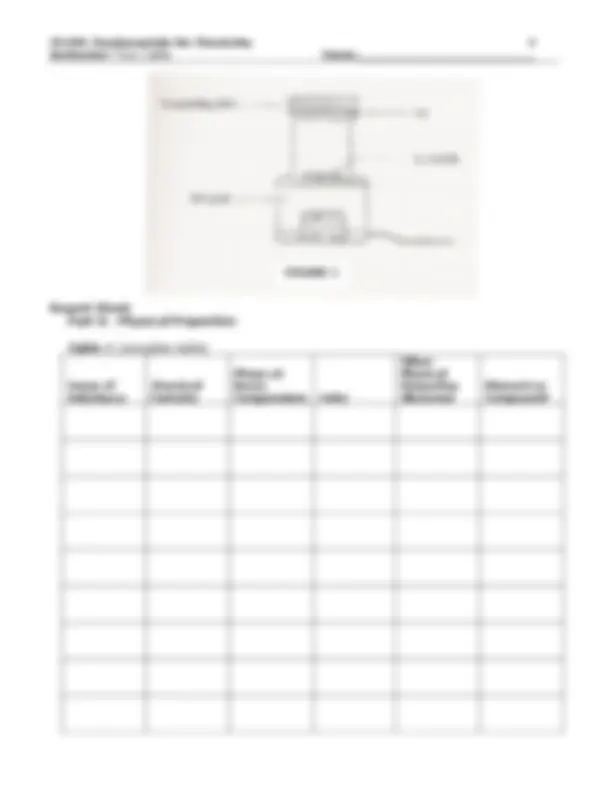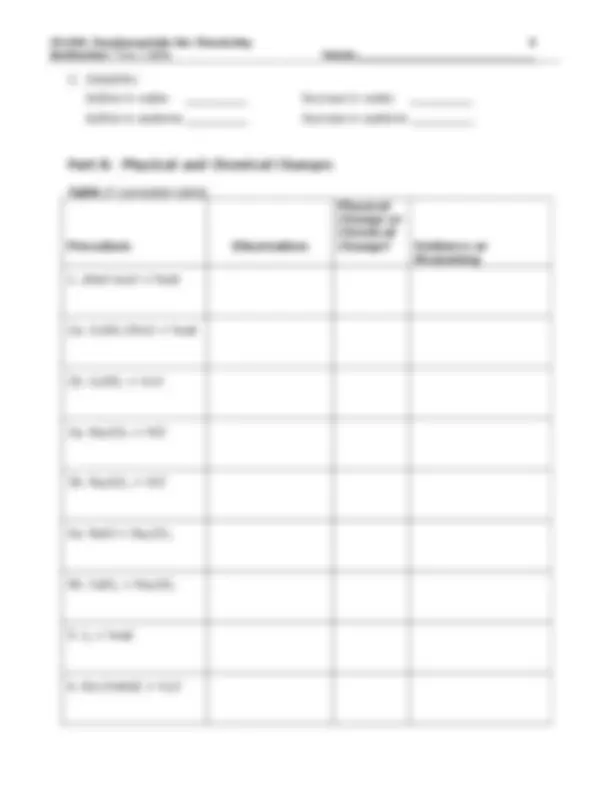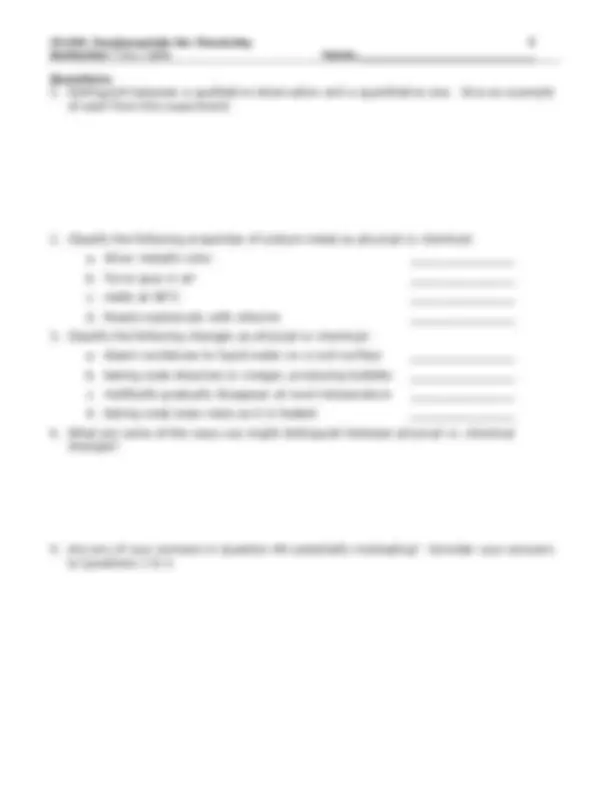





Study with the several resources on Docsity

Earn points by helping other students or get them with a premium plan


Prepare for your exams
Study with the several resources on Docsity

Earn points to download
Earn points by helping other students or get them with a premium plan
Community
Ask the community for help and clear up your study doubts
Discover the best universities in your country according to Docsity users
Free resources
Download our free guides on studying techniques, anxiety management strategies, and thesis advice from Docsity tutors
Material Type: Lab; Class: Fundamentals for Chemistry; Subject: Chemistry; University: Portland Community College; Term: Unknown 1989;
Typology: Lab Reports
1 / 5

This page cannot be seen from the preview
Don't miss anything!




Instructor: Tony Zable Name:_________________________
Objectives o Identify various physical and chemical properties of matter o To distinguish between chemical changes and physical changes. Materials Needed
Equipment: o Hot plate o 250 mL and 500 mL beakers o Glass stirring rod o 12-Well plate o Eyedroppers o Microspatula o Evaporating dishes
Chemicals: o Various elements and compounds
o Iodine crystals o Sucrose crystals o Acetone o Steel wool o Cupric sulfate pentahydrate crystals o 10% sodium carbonate solution o 10% sodium sulfate solution o 6 M HCl o 10% calcium chloride solution o 10% sodium chloride solution o De-ionized water
Discussion
Chemistry is the study of matter. It is very common for a chemist to need to describe a bit of matter as thoroughly as possible. In doing so, the chemist would certainly list physical properties. Many physical properties can be observed using our senses; color, crystal shape, and phase at room temperature are some examples. Other physical properties involve quantitative observations and so must be measured; density, specific heat capacity, and boiling point are three examples. A physical change is any change in a substance that does not involve a change in its chemical composition. During a physical change, no new chemical bonds are formed, and so the chemical composition remains the same. Examples of physical change are boiling, freezing, expanding, and dissolving. Matter can also be characterized by its chemical properties. The chemical properties of a substance include all the chemical changes possible for that substance. A chemical change is one in which the substance is transformed to a new substance. That is, there is a change in the chemical composition of the substance. During a chemical change, the atoms are pulled apart from one another, rearranged, and put back in a new arrangement. Examples of chemical change are burning, rusting, fermenting, and decomposing. In this experiment, you will first identify and record various physical properties of substances, using both qualitative and quantitative observations. In the second part, you will look at changes in matter and determine if they are physical or chemical.
Instructor: Tony Zable Name:_________________________
Procedure Part A: Physical Properties
2a. Place a small crystal of iodine in a well of one well-plate and a small crystal of sucrose in a well of a second well-plate. Use an eyedropper to fill each well with distilled water and stir gently with a microspatula. Record whether each substance is completely soluble, partially soluble, or insoluble. Rinse the iodine into a designated waste container and the sucrose into the sink. 2b. Repeat the procedure using acetone as the solvent. You may need to rinse the iodine into another designated waste container (ask your instructor). The sucrose can be rinsed into the sink with water.
Part B: Physical and Chemical Changes
Complete Table 2 of the report sheet for each of the following systems.
Instructor: Tony Zable Name:_________________________
Iodine in acetone _________ Sucrose in acetone _________
Table 2 (complete table)
Procedure Observation
Physical Change or Chemical Change? Evidence or Reasoning
2a. CuSO 4 .5H 2 O + heat
2b. CuSO 4 + H 2 O
3a. Na 2 CO 3 + HCl
3b. Na 2 SO 4 + HCl
4a. NaCl + Na 2 CO 3
4b. CaCl 2 + Na 2 CO 3
Instructor: Tony Zable Name:_________________________
Questions
a. Silver metallic color _______________
b. Turns gray in air _______________ c. melts at 98oC _______________
d. Reacts explosively with chlorine _______________
a. steam condenses to liquid water on a cool surface _______________
b. baking soda dissolves in vinegar, producing bubbles _______________ c. mothballs gradually disappear at room temperature _______________ d. baking soda loses mass as it is heated _______________